What Is Euler's Number? A Beginner-Friendly Overview
From beginner-friendly definitions to the math behind it, here’s your easy-to-follow overview of Euler’s number and its applications.
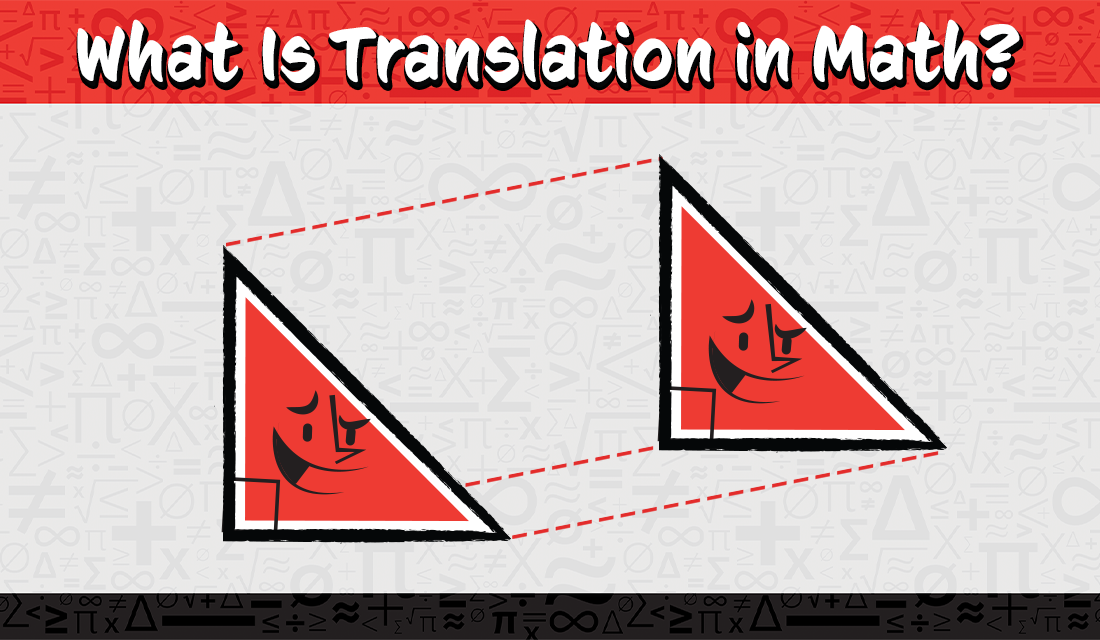
Whether you have just started learning about translation, are preparing for a test, or simply looking to refresh your knowledge, this middle-school-friendly guide is for you.
Read on to find easy-to-follow definitions, a simple how-to, and solved examples we prepared to help you master translations in math.
Translation is a geometric transformation in which we move every point of a figure the same distance in the same direction, without changing its size, shape, or orientation.
When we translate a figure, we move it across the coordinate plane in a straight line, either horizontally, vertically, or diagonally.
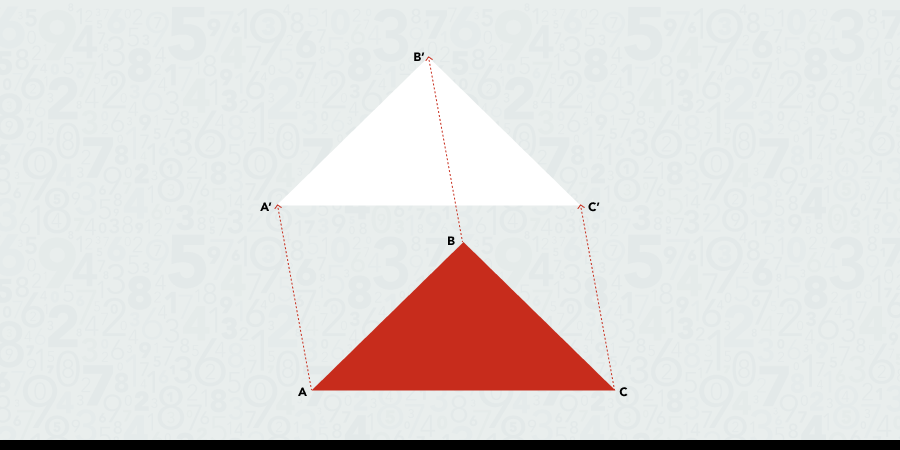
Translation is one of the 4 types of geometric transformations which also include:
Find Top-Rated Geometry Tutors at Mathnasium
Examples of translation are all around us.
Pushing a toy car in a straight line or sliding a chess piece across the board are great examples of translation because both figures preserve their size, shape, and orientation as you move them from one point to another.
Similarly, when you push a shopping cart in a straight line across a supermarket aisle, you are translating the cart's position.
But, if a wheel of your shopping cart comes off, that wouldn't be called a translation anymore because the cart wouldn't keep its shape and parts together as it moves.

Pushing a toy car down a straight path is a great example of translation in real life.
Translating figures means moving them across the coordinate plane in a straight line, whether horizontally, vertically, or diagonally.
When we translate a figure, every point on the figure moves by the same number of units or translation distance so that the figure keeps the same size and shape.
We often use the variable "k" to represent translation distance. If our scenario has more than one type of translation, we may also use other letters to represent different translation distances.
The original figure before the transformation is called the "pre-image," and the resulting figure after the transformation is called the "image."
So, to begin, we will create a pre-image of a rectangle ABCD on a coordinate plane.
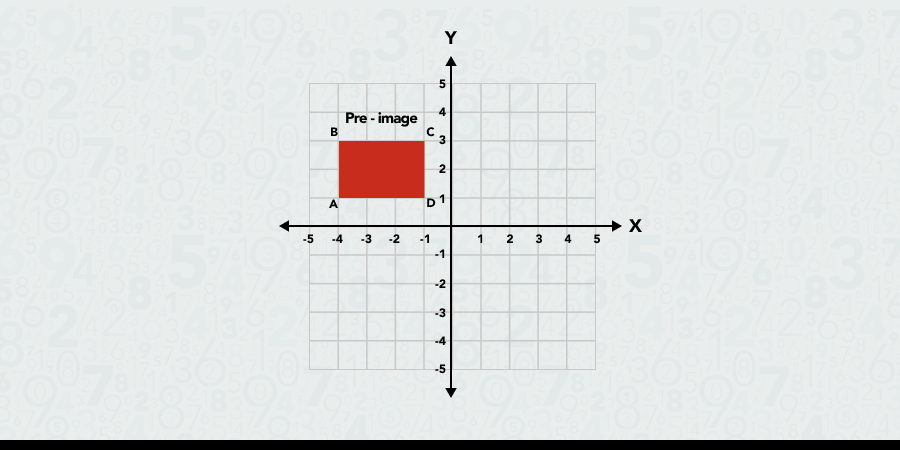
Now, let’s translate this figure by 5 units to the right and 1 unit up, where each square on the grid represents one unit.
First, we need to locate each corner of the pre-image (A, B, C, and D).
For each corner, we plot a new point that’s 5 units to the right and 1 unit up.
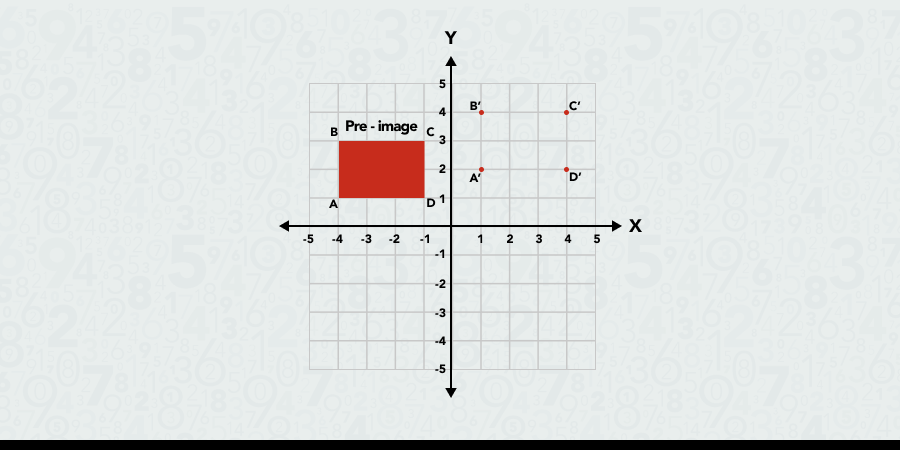
Next, connect the four new points to make the image (A'B'C'D').
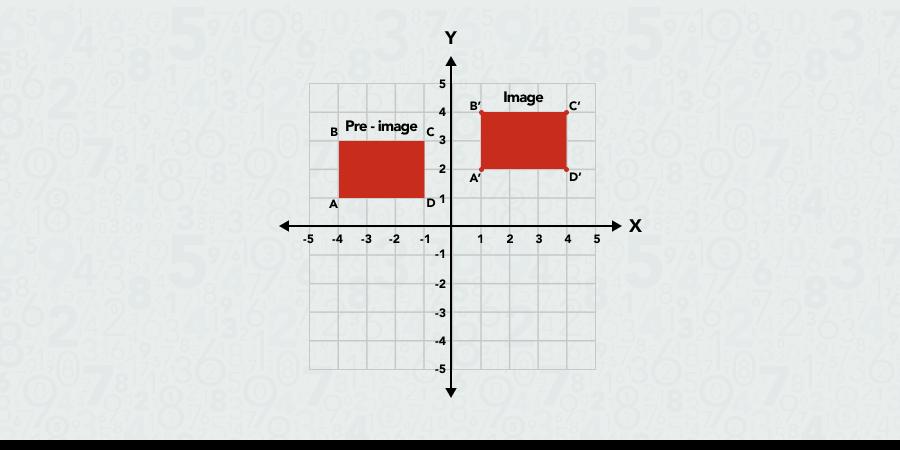
Lastly, determine the x and y coordinates of the pre-image and the image.
Those would be:
If we compare the coordinates of the pre-image and the image, we see that all the x-coordinates increased by 5 units and all y-coordinates increased by 1 unit.
We can conclude that when translating a figure to the right, we move it along the x-axis towards larger positive values, so we add the translation distance (k ) to each x-coordinate (x + k).
Similarly, when translating a figure up, we move it along the y-axis towards larger positive values, so we add the translation distance (j ) to each y-coordinate (y + j).
When translating a figure to the left, we move it along the x-axis towards smaller negative values, so we subtract the horizontal translation distance (k ) from each x-coordinate ( x – k).
When translating a figure down, we move it along the y-axis towards smaller negative values, so we subtract the vertical translation distance (j ) from each y-coordinate (y – j).
Makes sense?
Let’s recap:
Let’s look at this example. The graph shows the pre-image of a rectangle (ABCD).
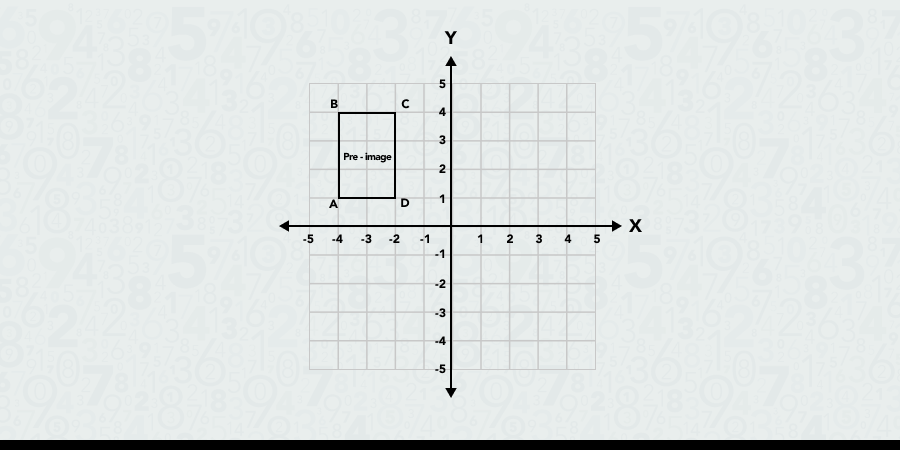
The rectangle should be translated 6 units to the right and 1 unit up.
Firstly, we locate the corners of the rectangle (A, B, C, and D).
Next, we plot the new points by moving each corner 6 units to the right and 1 unit up.
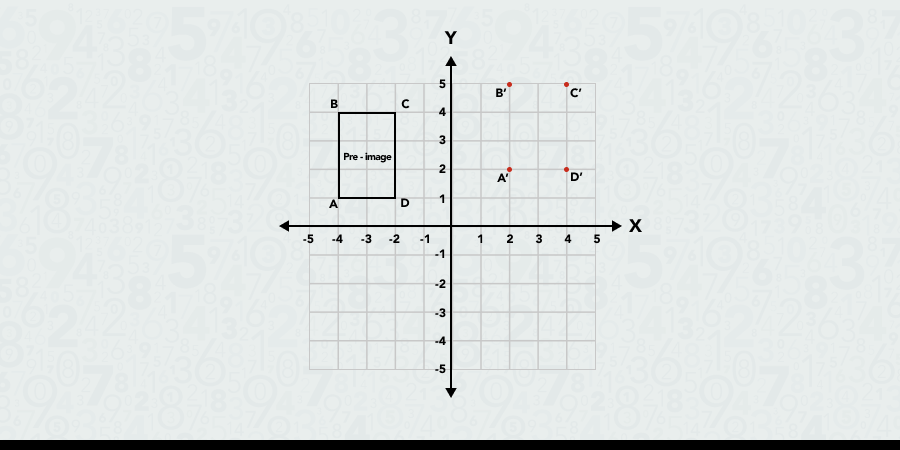
Now, we simply connect the points to create the image.
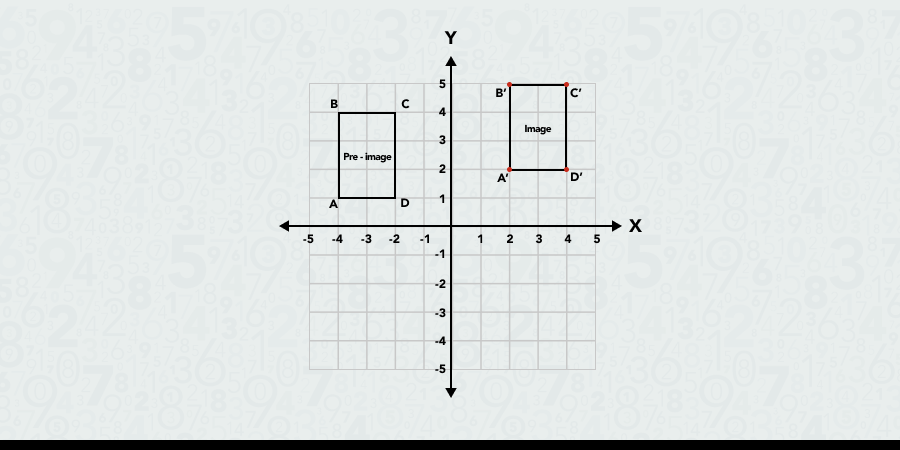
Since we moved the rectangle 6 units to the right along the x-axis and 1 unit up along the y-axis, we can find the image coordinates using this formula:
(x, y) —> (x + 6, y + 1)
The coordinates of the pre-image are:
A (-4,1), B (-4,4), C (-2,4), D (-2,1)
Let’s calculate the coordinates of the image:
Not so scary, right?
Now, let's apply what we've learned with a few practical examples.
The pre-image triangle (ABC) on the coordinate plane needs to be translated 4 units to the left and 1 unit downward.
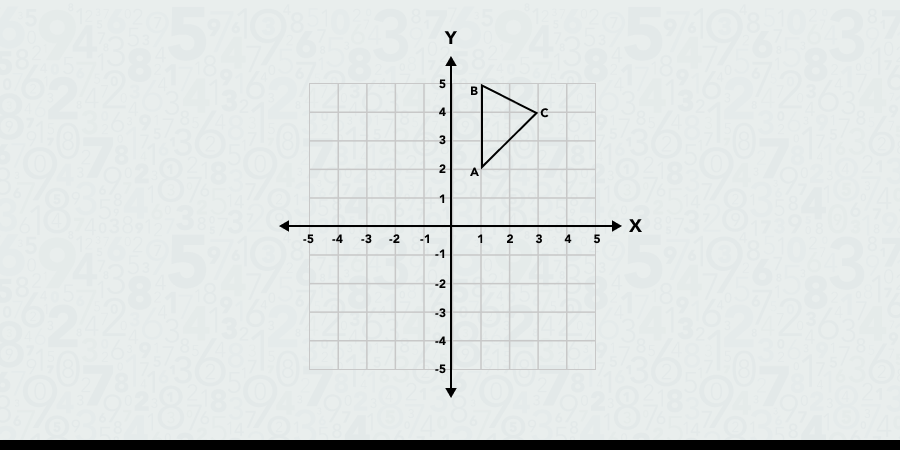
As we’ve done before, we first locate each corner of the pre-image.
For each corner, we plot a new point that’s 4 units to the left and 1 unit downward.
We then connect the new points and make the image (A'B'C').
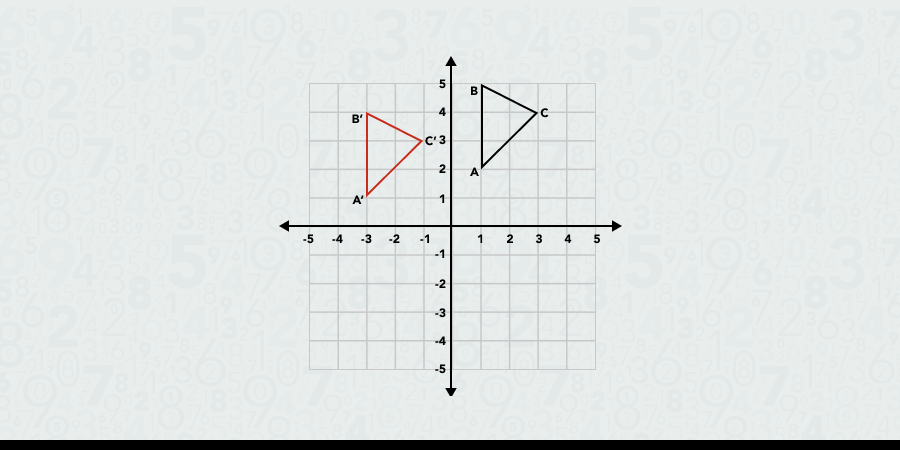
The coordinates of the pre-image are:
A (1,2), B (1,5), C (3,4)
Since we’re moving the figure 4 units left and 1 unit down, subtract 4 units from each x-coordinate and 1 from each y-coordinate to find the coordinates of the image.
(x, y) —> (x – 4, y – 1)
Let’s do the math:
The coordinates for the image are:
A' (-3, 1), B' (-3, 4), C' (-1, 3)
Let’s translate this rhombus (ABCD) and move it 1 unit left and 4 units down.
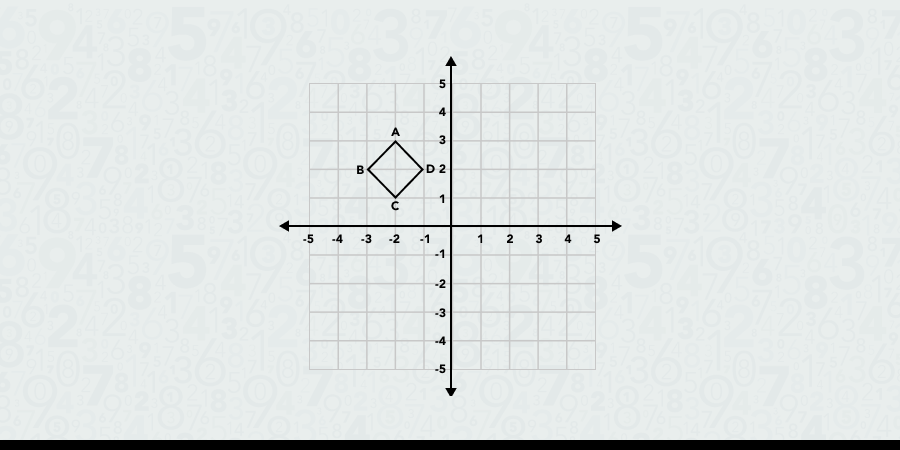
We locate each corner of the rhombus.
Then, we plot the new points by moving each corner 1 unit left and 4 down.
We connect the new points and create the image.
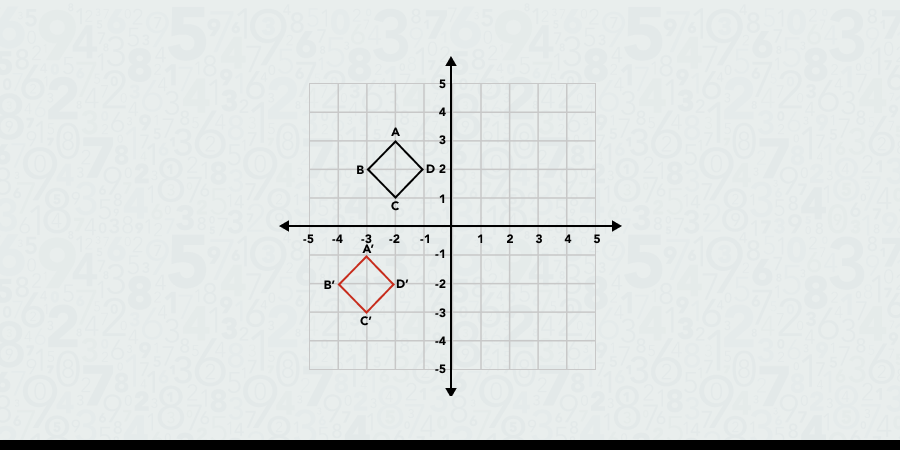
The rhombus’ coordinates are:
A (-2, 3), B (-3, 2), C (-2, 1), D (-1, 2)
To get the coordinates of the image, we subtract 1 from each x-coordinate and 4 from each y-coordinate.
(x, y) —> (x – 1, y – 4)
Let’s calculate:
The coordinates for the image will be:
A' (-3, -1), B' (-4, -2), C' (-3, -3), D' (-2, -2)
Our next task is to translate this rectangle (ABCD) in the coordinate plane below by moving it 6 units to the right and 2 units down.
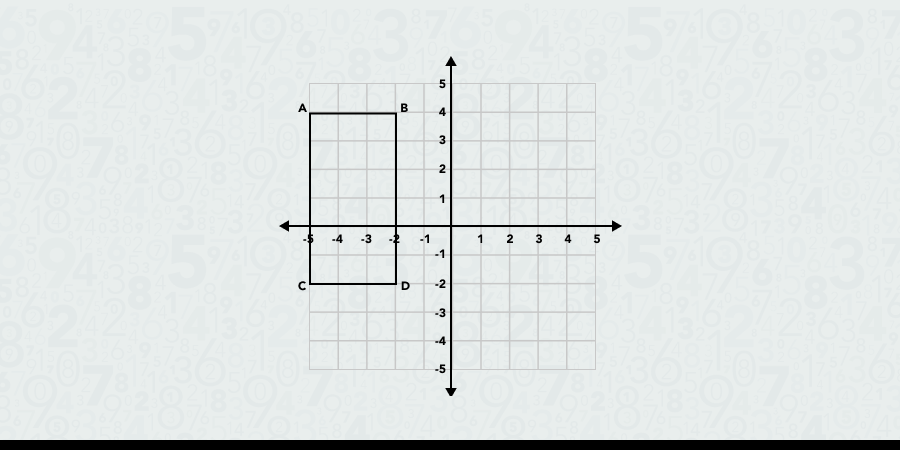
We follow the same steps and locate the corners of the pre-image (ABCD).
We shift each point 6 units to the right and 2 units down.
We connect the new points to produce the image.
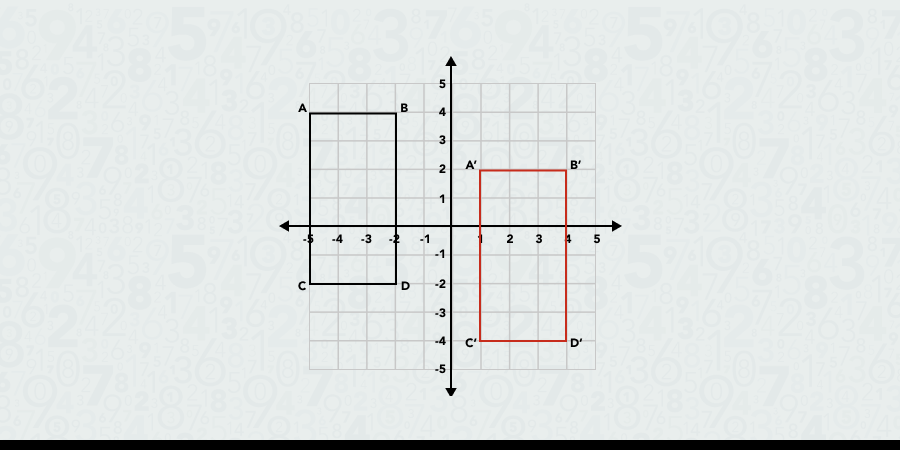
The pre-image coordinates are:
A (-5, 4), B (-2, 4), C (-2, -2), D (-5, -2)
To get the coordinates for the image, we add 6 to each x-coordinate and subtract 2 from each y-coordinate.
(x, y) —> (x + 6, y – 2)
Let’s calculate the new coordinates:
The coordinates for the image will be:
A' (1,2), B' (4,2) C' (4, -4), D' (1, -4)
Here are the most common questions Mathnasium’s geometry tutors get about translation in math.
In translation, our figure preserves the size, shape, and orientation as we move along the coordinate plane.
There is no limit to how far a figure can be translated in mathematics.
However, in practice, how far you can translate a figure may be limited by how big your coordinate plane (or graph paper) is.
Yes and no. Translation is one of 4 geometric transformations in math. The other 3 types of geometric transformations are reflection, rotation, and dilation.
Mathnasium’s specially trained tutors work with students of all skill levels to help them understand and excel in any K-12 math class, including geometry.
Explore our approach to middle school math tutoring:
Our tutors assess each student’s current skills and considers their unique academic goals to create personalized learning plans that will put them on the best path towards math mastery.
Whether you are looking to catch up, keep up, or get ahead in your math class, find a Mathnasium Learning Center near you, schedule an assessment, and enroll today!


Mathnasium meets your child where they are and helps them with the customized program they need, for any level of mathematics.
